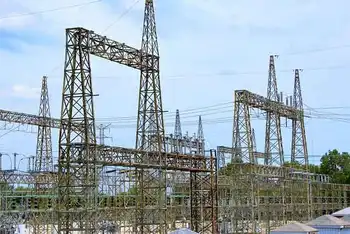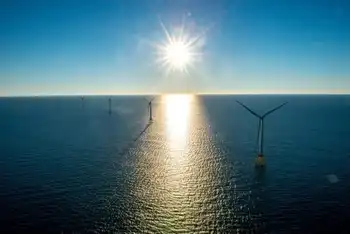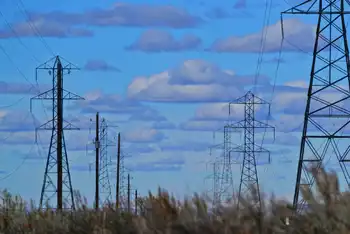Sailmaker looks to generate current
By Salem News
CSA Z463 Electrical Maintenance
Our customized live online or in‑person group training can be delivered to your staff at your location.

- Live Online
- 6 hours Instructor-led
- Group Training Available
Doyle is working with a New Hampshire company to fashion an efficient underwater turbine to harness steady, underwater currents for power. The design of the turbine's blades relies on Doyle's deep understanding of how sails power boats.
The potential for a sailmaker to help bolster the state's green economy and jobs was not lost on Patrick.
"What I learned today is there are some very, very intriguing new technologies being developed here," Patrick said.
Patrick, Salem Mayor Kim Driscoll and state Rep. John Keenan, D-Salem, and their respective entourages visited Doyle's headquarters in a new industrial park on Swampscott Road.
Doyle Sailmakers started in August 1982 in Marblehead at a time when there were 10 or 12 sailmakers in town, owner Robbie Doyle said. Several years ago, it moved to Salem, where it employs 35 people locally, down two or three from a few years ago.
In addition, there are 70 Doyle sail lofts around the world, and the company not only makes and services sails for local day sailors, its sails propel some of the world's largest and most expensive super yachts.
The sailmaker's motto, "Better Engineered Sails," may take on a whole new meaning if the company can create efficient underwater power turbines.
The governor and officials toured the cavernous sail loft, gingerly stepping on slick floors as workers knelt to work on sails spread around the 32,000-square-foot facility.
"I have never had so many blue blazers in my facility at once," said Doyle's wife, Janet.
While Patrick liked what he saw, he did not come bearing state help right away.
"I don't know yet what we can do, but one of the conversations we were having is what their needs are to help them get to the next stage," Patrick said.
The state has, through the Regional Greenhouse Gas Initiative, some resources the state can tap to invest in green technologies, Patrick said.
Massachusetts is one of 10 states that sell power plant emission allowances through auctions and invest the proceeds in energy-efficient and renewable energy projects, according to RGGI's website.
"Doyle grew and expanded and helped... embrace that technology because of a city investment and a state investment to actually put them here," Driscoll said. "They used to be in Marblehead, a much smaller company, a much smaller footprint. Now they are here, building sails, building airships, talking about other innovation."
Driscoll pointed out the building that houses the sail loft used to house Maynard Plastics. Several years ago, the facility was sold and carved into industrial condominiums.
"Now it's 10 different companies," many of which focus on innovation, Driscoll said. Driscoll met with Doyle a week ago, and, after she did so, she decided to take Patrick out to see what they were working on.
"You could see they are not designing it as a renewable energy product," Driscoll said. "They are designing it as an economic way to deliver electricity that happens to have a lot of renewable benefits."
So how did a sail company come to design an underwater power turbine?
Part of the reason, Doyle said, is the company takes an engineering approach to sail making. Doyle studied applied physics at Harvard University, and Doyle's son, Tyler, is the company's chief engineer.
About a year ago, Robert Houvener, president and founder of ScaleTera Renewable Energy LLC of Hollis, N.H., approached Doyle to create a new, more efficient water turbine using sail material.
The idea was to build big blades out of sail fabric that might withstand ocean currents.
"It turned out it was not cost-effective," Robbie Doyle said. But Doyle kept on working on the project.
"I loved everything I saw," Tyler said. "I had been working on wind turbines for the year or two before that." Tyler had been put off by the wind turbine's enormous cost for not a lot of power.
"The second you looked at the economics of this project, it just made so much more sense," Tyler said.
Turbines helped mills power the industrial revolution by harnessing power from swift-flowing rivers. However, traditional water turbines require high-speed currents of 8 to 10 knots and building structures that can stand up to that type of force, making them too expensive to build.
Doyle's technology requires slower but steady currents of about 3 knots. The turbines can be assembled in standard shipyards and don't rely on special, and expensive, ships and facilities.
The goal is to someday harness the currents of the Gulf Stream, the swift Atlantic Ocean currents off the East Coast or the Bosphorus Strait in Turkey.
"We had never built a propeller blade in our life," Robbie Doyle said, "but, again, it's just like a twisted sail, it's no different."
If all goes according to plan, Robbie Doyle said it could be a billion dollars-plus business in six years.
"We just have to come up with a technology, which we've done," Doyle said. "Now we just have to build it."











